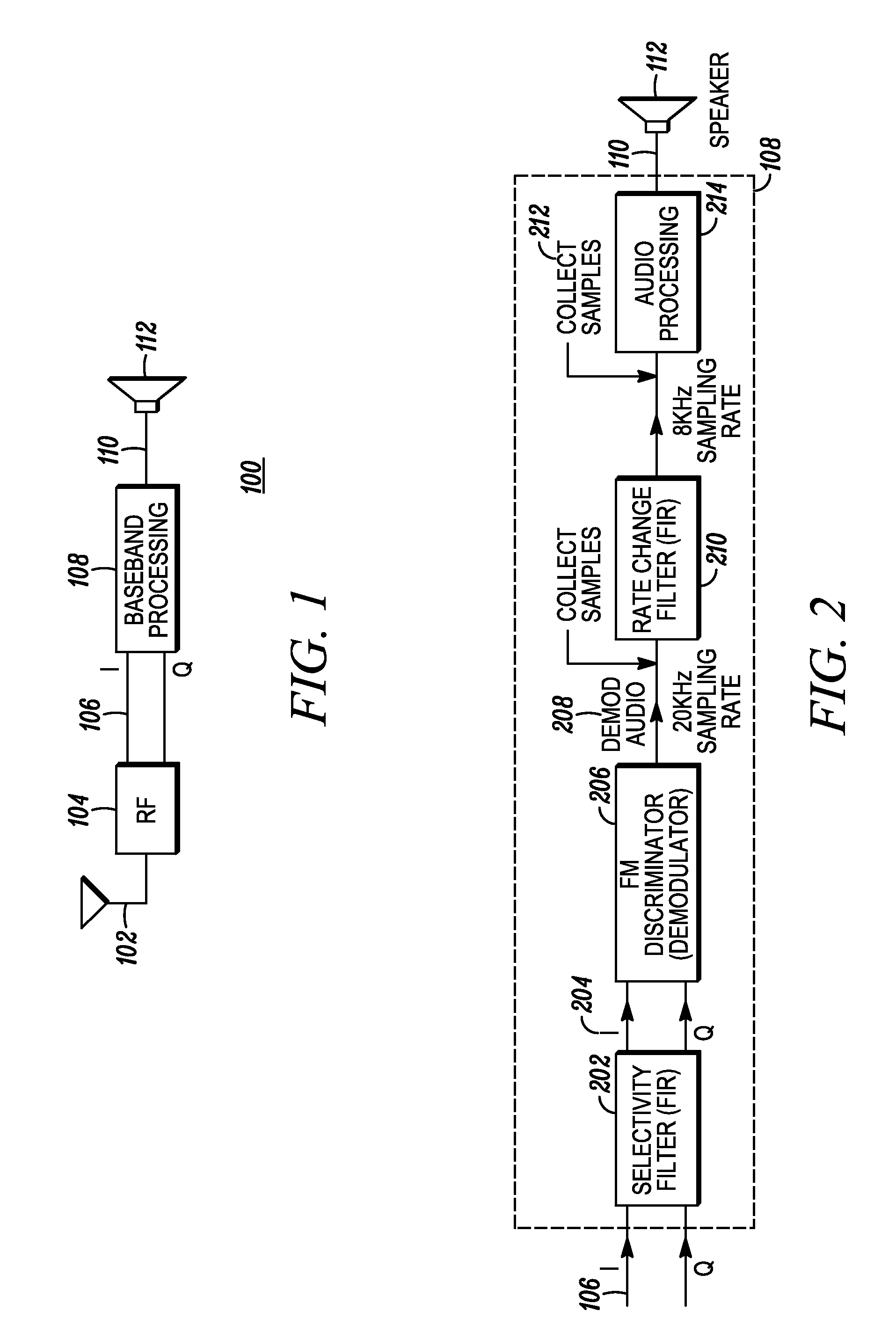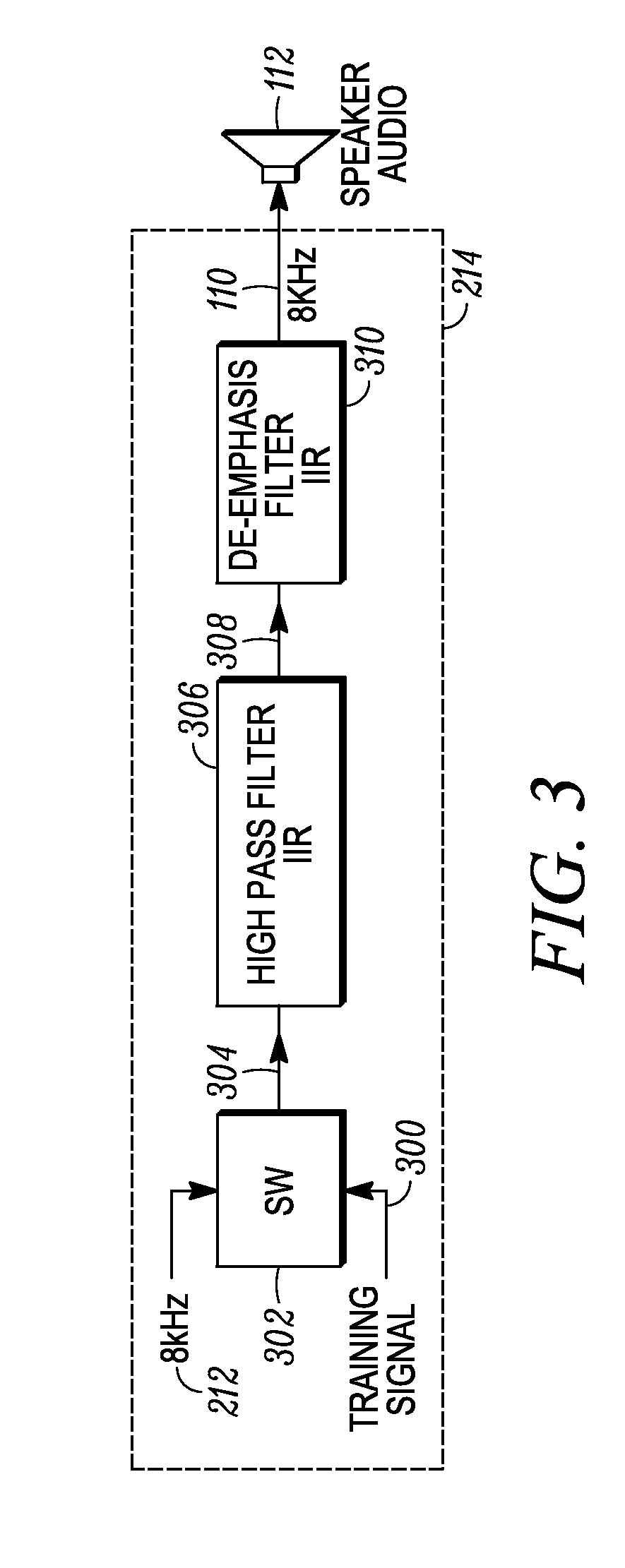Audio hole suppression method and apparatus for a two-way radio
a two-way radio and suppression method technology, applied in the direction of electrical apparatus, amplification control, transmission, etc., can solve the problems of annoying the user of the radio with pop-like sounds, audio artifacts, and increasing the time during which home-channel audio is masked ou
- Summary
- Abstract
- Description
- Claims
- Application Information
AI Technical Summary
Benefits of technology
Problems solved by technology
Method used
Image
Examples
Embodiment Construction
Briefly there is described herein, a radio receiver having an audio lineup containing a series of audio shaping filters. On return from the priority channel, a training signal is constructed based on a few samples of the home-channel signal. This training signal is filtered through the audio lineup such that the filter states closely approximate the dynamics of the home-channel signal. By intelligently adjusting the filter states of the audio shaping filter stages, a transient response is minimized thereby minimizing an audio hole. As such, annoying audio artifacts (pops) are suppressed from being presented at a speaker.
The accompanying figures, where like reference numerals refer to identical or functionally similar elements throughout the separate views, together with the detailed description below, are incorporated in and form part of the specification, and serve to further illustrate embodiments of concepts that include the claimed invention, and explain various principles and a...
PUM
 Login to View More
Login to View More Abstract
Description
Claims
Application Information
 Login to View More
Login to View More - R&D
- Intellectual Property
- Life Sciences
- Materials
- Tech Scout
- Unparalleled Data Quality
- Higher Quality Content
- 60% Fewer Hallucinations
Browse by: Latest US Patents, China's latest patents, Technical Efficacy Thesaurus, Application Domain, Technology Topic, Popular Technical Reports.
© 2025 PatSnap. All rights reserved.Legal|Privacy policy|Modern Slavery Act Transparency Statement|Sitemap|About US| Contact US: help@patsnap.com



